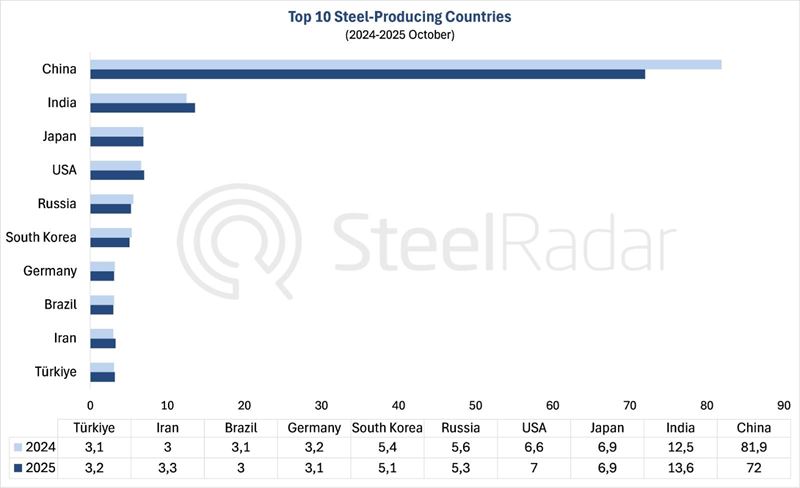In this transition, power generation from solar and wind energy played a critical role by meeting the entire increase in global electricity demand.
According to the Global Electricity Mid-Year Insights report published by the international energy think tank Ember, global electricity demand grew by 2.6% year-on-year in the first half of 2025. During the same period, generation from solar and wind energy exceeded this growth, leading to a slight decline in electricity production from fossil fuels.
In the first half of the year, solar energy accounted for 8.8%, wind energy for 9.2%, and hydropower for 13.9% of global electricity generation. Other renewable sources made up 2.3% of the total. As a result, the overall share of renewables rose to 34.2%, while coal’s share declined to 33.1%.
During this period, renewables generated 5.072 terawatt-hours (TWh) of electricity, compared to 4.896 TWh from coal. The share of natural gas in electricity generation stood at 20.7%, while nuclear energy accounted for 9.1%.
Coal’s share in global electricity production dropped 0.6% year-on-year, while gas fell 0.2%. This decline contributed to a 0.2% reduction in carbon emissions from the power sector.
China, India, the United States, and the European Union (EU) continued to play a decisive role in global electricity generation. In China and India, fossil fuel-based generation decreased while renewable output increased. China maintained its position as the world’s clean energy leader, while in India, renewable generation outpaced the country’s growing electricity demand. In contrast, fossil fuel generation in the US and EU rose during the first half of the year.









Comments
No comment yet.